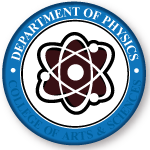Document Type
Article
Publication Date
1-2006
Publication Title
Physical Review B
Volume
73
Issue
3
Abstract
The electronic structure, total energy, and vibrational properties of C2B10H12 (carborane)molecules and C2B10 clusters formed when the hydrogen atoms are removed from carborane molecules are studied using density functional methods and a semiempirical model. Computed vibrational spectra for carborane molecules are shown to be in close agreement with previously published measured spectra taken on carborane solids. Semiconducting boron carbide films are prepared by removing hydrogen from the three polytypes of C2B10H12 deposited on various surfaces. Results from x-ray and Raman scattering measurements on these films are reported. Eleven vibrationally stable structures for C2B10 clusters are described and their energies and highest occupied and lowest unoccupied molecular orbital gaps tabulated. Calculated Raman and infrared spectra are reported for the six lowest-energy clusters. Good agreement with the experimental Raman spectra is achieved from theoretical spectra computed using a Boltzmann distribution of the six lowest-energy free clusters. The agreement is further improved if the computed frequencies are scaled by a factor of 0.94, a descrepancy which could easily arise from comparing results of two different systems: zero-temperature free clusters and roomtemperature films. Calculated energies for removal of hydrogen pairs from carborane molecules are reported.
Recommended Citation
Park, Kyungwha; Pederson, Mark R.; Boyer, L. L.; Mei, Wai-Ning; Sabirianov, Renat F.; Zeng, Xiao Cheng; Bulusu, Satya Silendra; Curran, Seamus; Dewald, James; Day, Ellen E.; Adenwalla, Shireen; Diaz, Manuel; Rosa, Luis G.; and Dowben, Peter, "Electronic Structure and Vibrational Spectra of C2B10-Based Clusters and Films" (2006). Physics Faculty Publications. 29.
https://digitalcommons.unomaha.edu/physicsfacpub/29


Comments
Published in Physical Review B 73, 035109 (2006) (9 pages). URL: http://link.aps.org/abstract/PRB/v73/e035109
DOI:10.1103/PhysRevB.73.035109 Copyright 2006 American Physical Society. Used by permission.